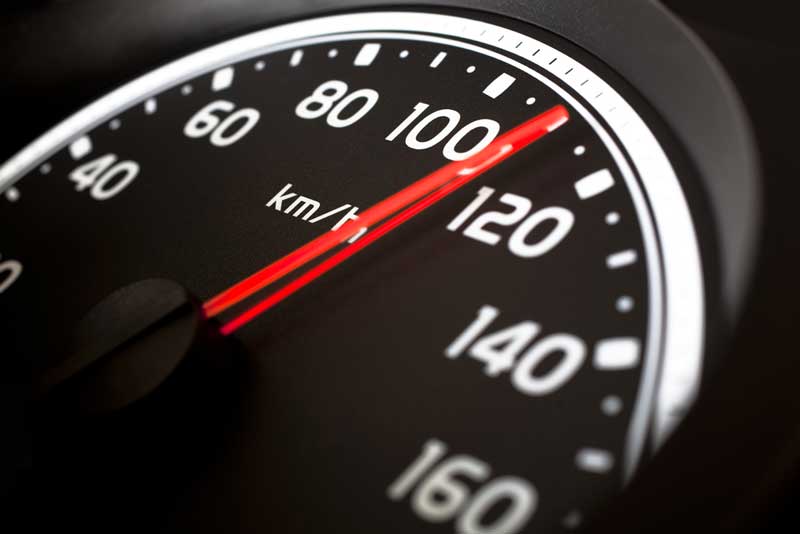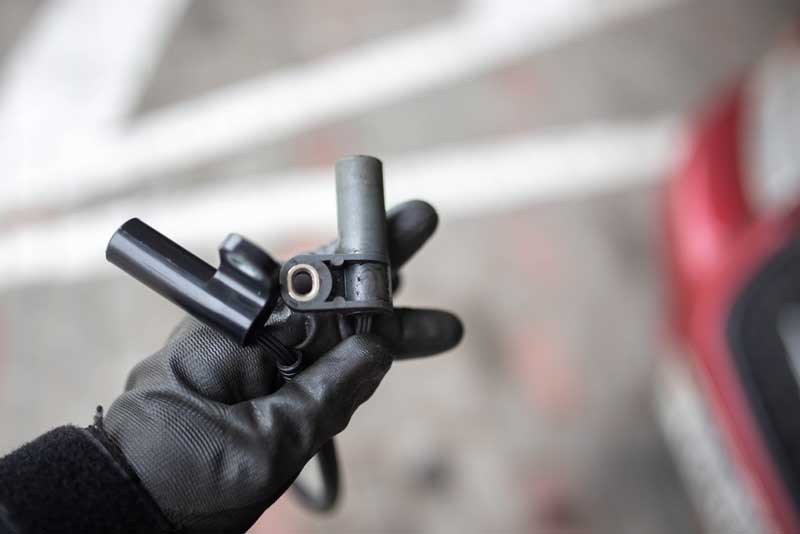Are you facing some symptoms on your car relating to a bad crankshaft position sensor, and you will like to know a temporary fix for crankshaft position sensor?
This sensor, also known as CKP is that which transmits the rotational speed of the engine to Engine Control Unit, also referred to as ECU.
Some of the symptoms of a bad crankshaft position sensor include an inability to start your vehicle, check engine light on the dashboard, engine misfiring, and more discussed in the article.
This article also brings a temporary fix for crankshaft position sensor, which will aid you to get your car working if you are unable to visit the mechanic garage.
Let’s get started!
Temporary Fix For Crankshaft Position Sensor
There are no temporary fixes for the crankshaft position sensor. This vehicle component must always be in good operating condition, and if it shows signs of problems, it needs replacement as soon as possible.
How Does The Crankshaft Position Sensor Operate?
The component that transforms the piston’s reciprocating motion into the wheel shaft’s rotation in an internal combustion engine is called the crankshaft. This allows the wheel to move and rotate either in the desired direction or forward. Nevertheless, The (CKP) crankshaft position sensor is a crucial component that comes along with the crankshaft, although only a few people are attentive to it.
The component that examines the rotational speed of the crankshaft and transmits that data to the Engine Control Unit (ECU) is the CKP Sensor. The Engine Control Unit controls exhaust, refueling, and fuel burn time using information from the crankshaft sensor.
The Engine Control Unit can control the energy the engine produces and assist the car in moving at the correct speed.
Crankshaft sensors are crucial sensors for internal combustion engines, to put it simply. Unfortunately, the ECU cannot accurately determine the crankshaft’s speed and position of the CKP sensor. Additionally, the malfunction of a CPK sensor makes your car and engine run inaccurately and unstable. The crank sensor may malfunction if your vehicle shows any of the proceeding six engine and vehicle symptoms.
6 Signs of a Failing or Bad Crankshaft Position Sensor
Difficulty in Starting the Vehicle
Starting the vehicle will become more difficult if there are issues with the Crankshaft CPK sensor, the engine, and ECU. The earlier you repair the problems, the better, as the likelihood of starting an engine decreases as it becomes older.
Check Engine Light Shows On Dashboard
The engine won’t function properly if the ECU doesn’t get information about the speed and position of the crankshaft. So therefore, the “check engine” light will switch on; On the vehicle’s dashboard when the mentioned problem is with several position sensors. This is most often the first indication of issues with the CKP sensor.
Regardless, a malfunctioning crank sensor is only one of several potential causes of a glowing “check engine” light. You should pay attention to the “check engine light flashing and vehicle shaking.” So that you may verify the error codes using the OBD-II tool to CKD in pinpointing and identifying the precise issue.
Irregular Stalling
A malfunctioning crankshaft position sensor might also cause your automobile to halt while driving when the engine abruptly stops. This is because the Engine Control Unit adjusts the refueling time such that the engine doesn’t receive sufficient fuel. If the Crankshaft Position issue is not quickly fixed, this unexpected engine shutdown will occur more frequently.
Misfiring Engine
When the CKP sensor fails to provide the Engine Control Unit with information on piston position and crankshaft speed, misfiring takes place. Indirect causes of engine vibration or shutdown can also be attributed to misfiring.
Vibrating Engine
When the car is running and jerks or shakes violently, it makes accelerating difficult. A CKP sensor issue might cause it.
This frequently occurs due to the engine not receiving enough fuel due to a communication error between the crankshaft and the ECU. If this issue is not resolved immediately, the engine may sustain serious damage.
Uneven Acceleration
The Engine Control Unit cannot accurately regulate the engine as expected if the Crankshaft position sensor has an issue. As a result of this error, the feeling of discomfort is unavoidable because the vehicle lacks the essential energy to accelerate at a desired rate.

How To Fix Crankshaft Position Sensor Temporarily
Your CKP sensor malfunctions or has issues if your vehicle exhibits at least two of the six warning indications recorded above. The vehicle needs to be taken right away to the mechanic garage for an immediate repair and inspection.
Nonetheless, you can use the short-term fixes listed below if you are unable to visit a mechanical garage. You can use these methods, particularly if your car suddenly stalls.
Although we have mentioned that there are no temporary fix for crankshaft position sensor, this is true when the sensor gives out.
However, when your car suffers some sensor-related issues, you could debug the problem and perform the following steps for a potential fix.
Step 1: Detach the CKP sensor
You should try unplugging the crank sensor if your vehicle doesn’t start from scratch.
According to the directions, you must first locate the Crankshaft Position sensor’s location (near the camshaft).
After that, disconnect the Crankshaft Position sensor connector and start the vehicle again. Again, the automobile might start up using the default mapping if you’re lucky.
Find a technique to swap out the car’s Crankshaft Position sensor if the vehicle still won’t start.
Step 2: Add up fuel
Filling the cylinder with fuel will solve the problem if the Engine Control Unit fails to give enough fuel to the cylinder and the automobile abruptly stops.
Step 3: Restart the engine
It would help if you pulled over to the curb when you noticed that your car is shaking or jerking while you are driving or if you noticed that the check engine light switched on. In addition, you can lessen the shock in your car by stopping and turning off the engine, allowing it to cool down, and then restarting the machine.
How to Replace the Crankshaft Position Sensor
Since there is just one screw or bolt holding the CKP sensor in place, replacing it shouldn’t be at all challenging; remove the old sensor, just unplug the power cord and loosen the bolt.
Finding the sensor, which may be hidden deep in the engine compartment, is the most difficult aspect of the process. Although each car has a unique sensor location, they are often mounted near the flywheel, between the engine and the transmission.
How Can One Test a Crankshaft Position Sensor?
You’ll require a test lamp to inspect the CKP sensor. There are two types of crankshaft sensors: two-wire and three-wire, and each have a different testing procedure.
How to Test the 2-wire Crankshaft Position Sensor
- First of all, the CKP sensor must be disconnected.
- The test bulb should be attached to the +ve battery terminal.
- The ignition should then be set on the “on” position.
- Tap the sensor terminals repeatedly and quickly.
- When you do this, the sensor is functional if the spark plug click, and you will get to hear it.
How to Test the 3-wire Crankshaft Position Sensor
- Remove the sensor for the crankshaft.
- To the battery connector marked ground,” attach the test bulb.
- The ignition should be in the “On” position; check to confirm; if it is not, then you set it “on”
- There is a signal terminal in the middle; tap there.
- As you are done with this, you will notice the spark plug click, meaning that the sensor is functional.
The two tests examine how the car’s computer reacts to sensor warnings or signals. Also, an injector pulse and spark plug click come along with them.
When you have a 2-wire sensor, ensure to connect the test bulb to the definite terminal; and when you have three-wire sensor, ensure to connect it to the opposing terminal.
Also Read: Head Gasket Replacement Cost
Frequently Asked Questions – Temporary Fix for Crankshaft Position Sensor
Can a car run without a crankshaft position sensor?
The crankshaft position sensor is the most crucial of engine management sensors; without it, the engine cannot function.
Can I fix crank sensor?
A door panel remover should be placed next to the crankshaft sensor. To remove the sensor, pry it from the engine block and move it around. Look for any potential issues. You will need a new crankshaft sensor if the old one is rusted.
What happens if the crank sensor is not working?
Your vehicle’s motor control unit cannot adjust the fuel injection or the spark timing as the engine speed increases if your crankshaft sensor isn’t functioning properly.
Can you drive with a messed up crankshaft sensor?
If the problem is only about getting your car started, the answer to whether it is okay to start your vehicle when the crankshaft fails is yes. However, do not operate your car if the position sensor is jeopardized or if you see signs of a crankshaft issue that you can not dismiss.
What happens if I disconnect crank sensor?
The vehicle could just start in “limp” mode when the crankshaft sensor is disconnected; it cannot start normally.
What causes a crankshaft sensor to go out?
The failure of the CKP sensor can be brought on by several factors, including damage to defective circuitry and debris. The engine is hostile and harmful environment, even for contemporary electronics. Even though they were designed for it, most sensors finally break down from the engine’s constant heat and vibration.
Can crankshaft sensor stop fuel pump?
I can see how the lack of a CKP sensor warning signal may make it difficult for the engine to start because the Engine Control Unit won’t let the vehicle operate without one. The fuel pump relay’s ability to turn on and prime the gasoline lines may also be compromised by a lack of signal.
How much does it cost to replace the crank sensor?
To safeguard the engine and ensure the vehicle run more smoothly and safely, it would be beneficial if you replaced the poor crankshaft sensor.
Today, a crank sensor might cost anywhere between $75 and $120, pending on the car. A Crankshaft position sensor replacement costs between $120 and $300 when labor is factored in.

